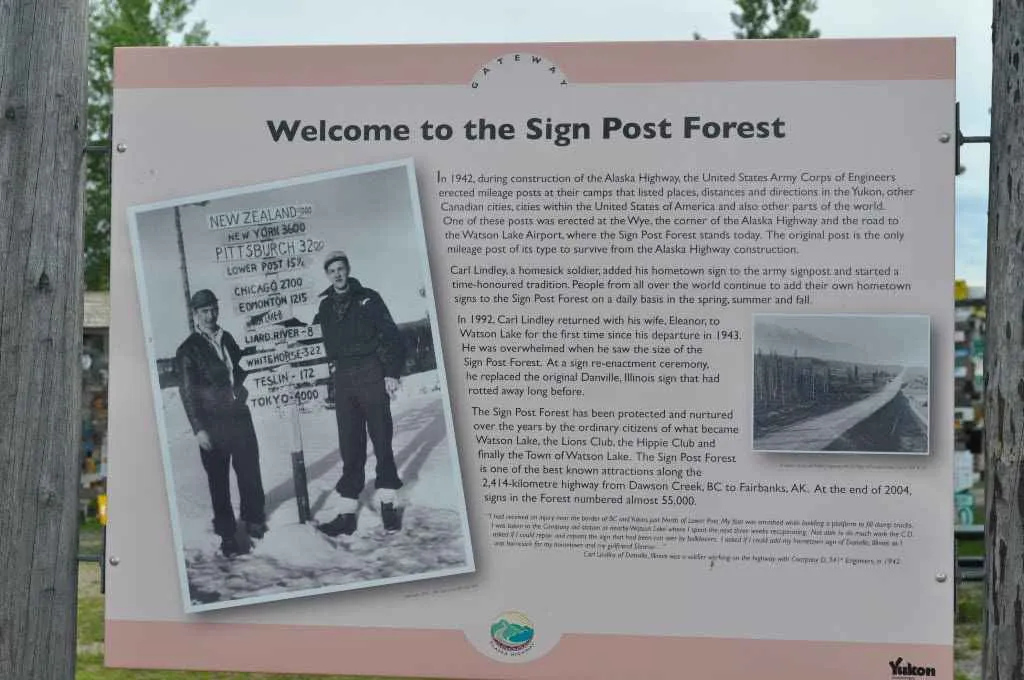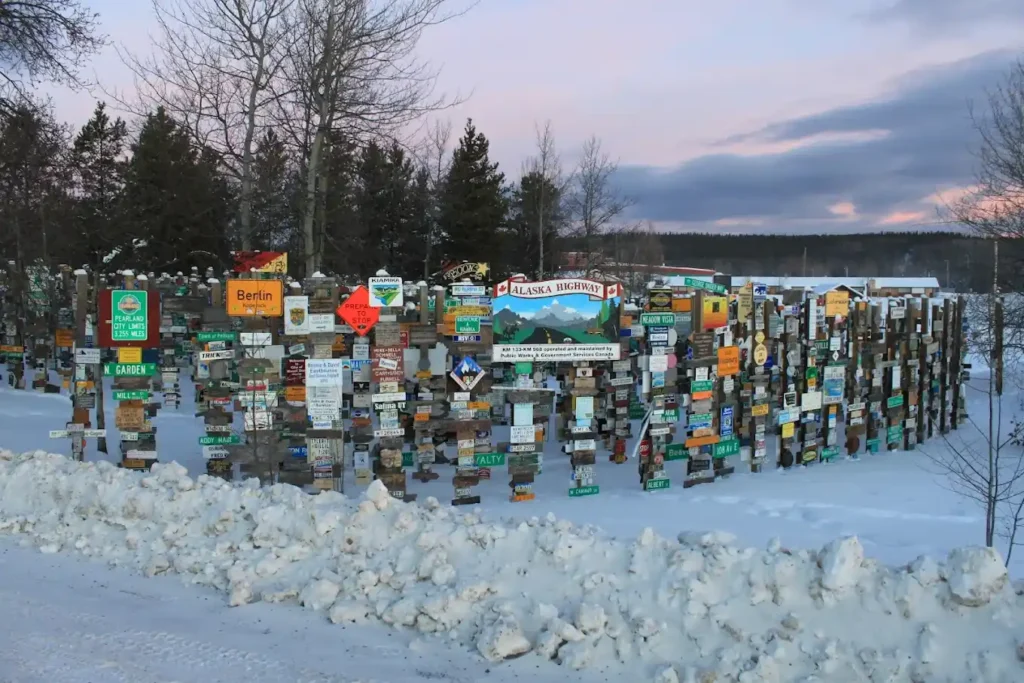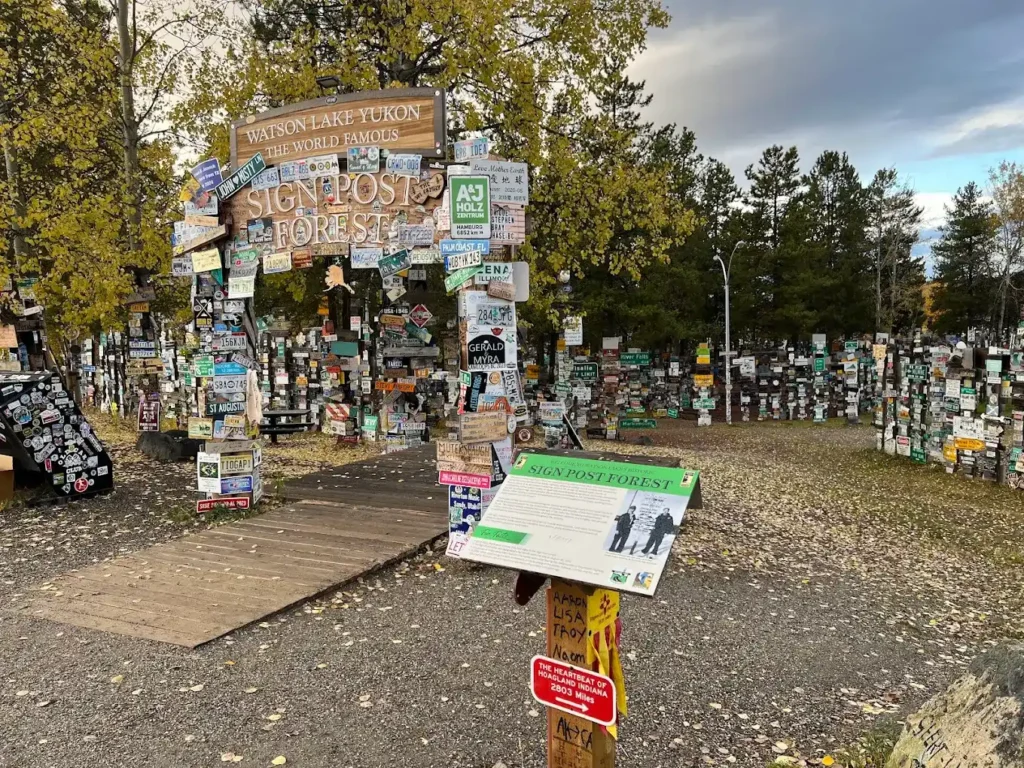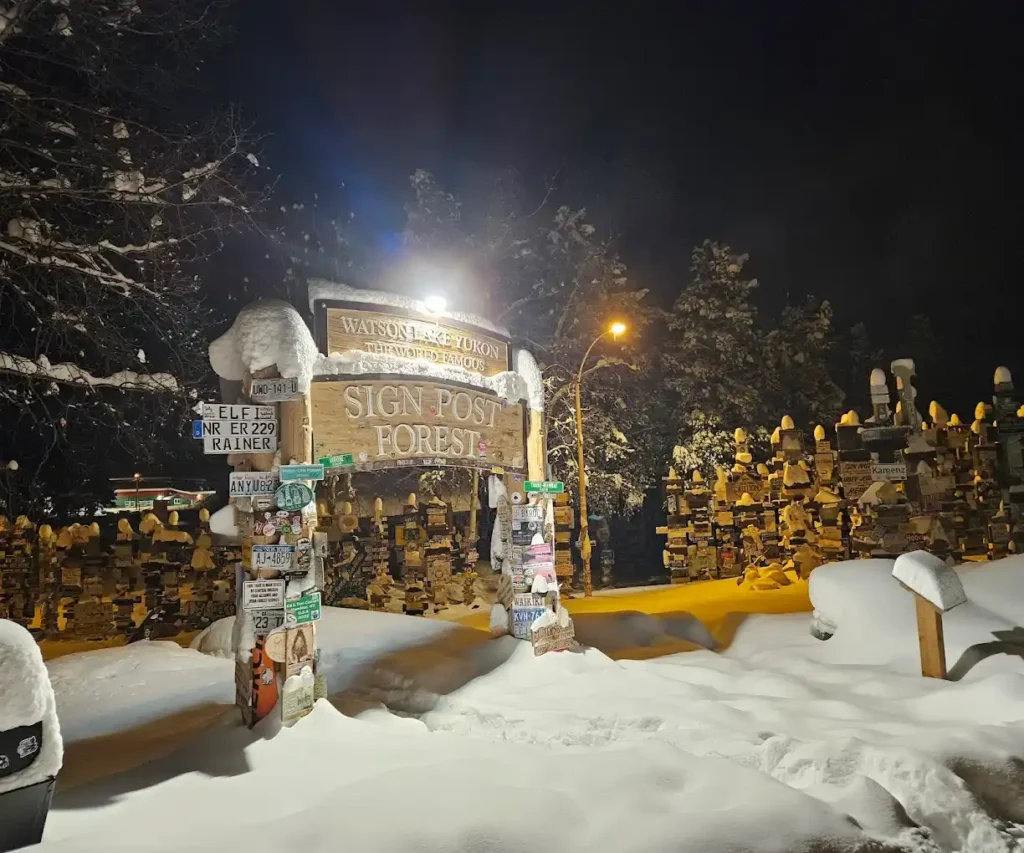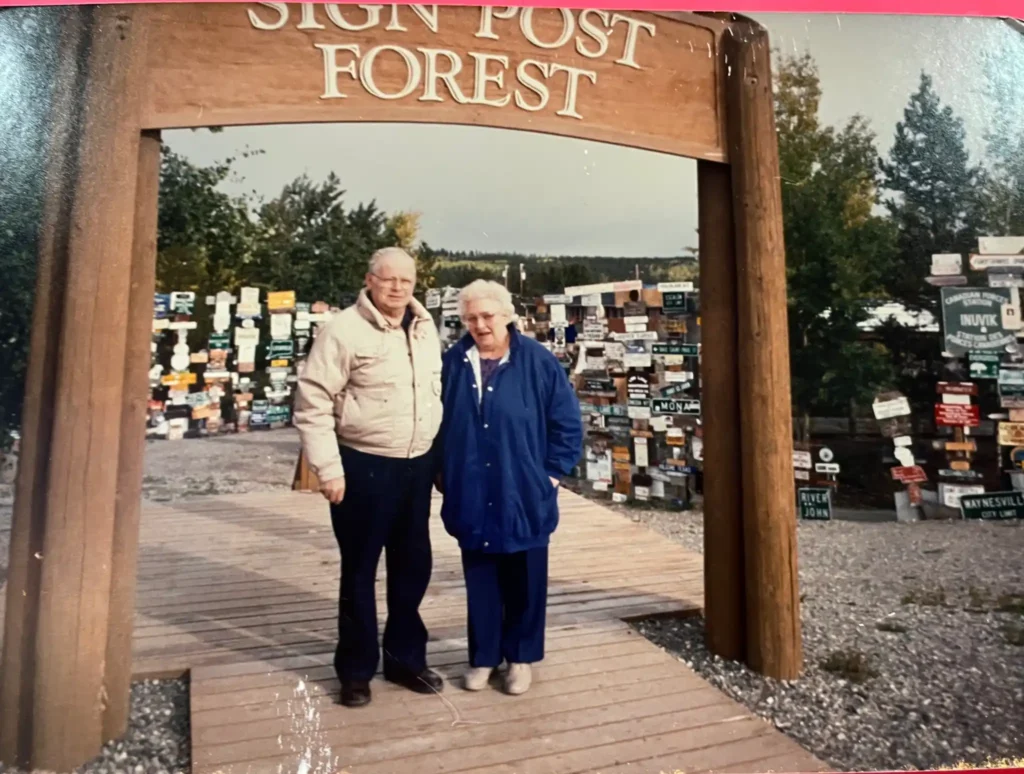It all began in 1942, in the middle of a war that seemed to be everywhere. The United States was building the Alaska Highway, a road meant to connect Dawson Creek to Fairbanks. It was a massive, military, strategic project. But in a remote corner near what is now Watson Lake, something different happened.
Soldier Carl Lindley was injured during the highway’s construction and was recovering in Watson Lake. He was assigned to fix a simple signpost. Nothing unusual. But Carl was feeling something many know and few admit: homesickness. He missed his home, his girlfriend, his hometown. So he did something unexpected. He nailed a sign that read: “Danville, Illinois.”
A small, human gesture. But it was enough. Others saw it. Others felt it. And then, they started doing the same.
A tradition that grows every year
Since then, thousands of visitors have added signs from all over the world. In 1990, a couple from Ohio placed the 10,000th sign. By the end of 2004, there were nearly 55,000. Today, the spot where Carl nailed his sign has become a forest — not of trees, but of signposts. Over 100,000 of them, from every corner of the globe. A chaotic, beautiful map of identity, belonging, and distant homes.
Each summer, more arrive. Tourists travel thousands of kilometers down the Alaska Highway just to leave a piece of their story nailed to a post. Some bring their signs. Others make them on-site, at the Visitor Centre. And while they do it, something shifts. As if by leaving a part of their life in that remote corner of the world, they could feel connected to something greater.
The return of Carl Lindley
The place holds more than signs. The remains of the wartime construction equipment are still there. In 1992, on the 50th anniversary of the highway project, a time capsule was buried there — a promise to the future, a vessel of memory, to be opened in 2042.
That same year, Carl Lindley returned. No longer a soldier, but an old man. He came with Eleanor, his wife. And in a quiet ceremony, he placed a replica of his original sign — the real one had long deteriorated. Photos from that day, of his return, can still be found at the Visitor Centre. Carl passed away in 2002, in Danville — the place he had always longed to return to. But his sign remains in the Yukon, enduring winters and nostalgia.
Today, the Sign Post Forest keeps growing. Not because someone tells it to, but because people need it. Some call it a tourist attraction — but it’s far more than that.
It’s a forest of names, places, and lives. A space where nostalgia takes shape, where the distant becomes near, and where anyone can leave a sign and say:
“I was here. I belong too.”
And maybe that’s the most valuable part.

